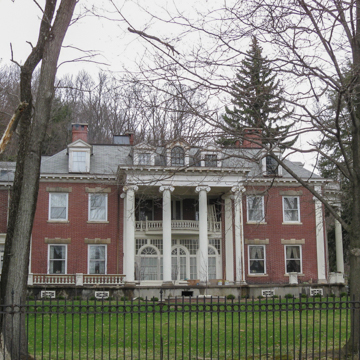Charles Warren Stone, who commissioned this house, served as Pennsylvania's lieutenant governor in 1879 and secretary of the commonwealth from 1887 until 1890, when he went to the U.S. Congress for nine years. The large Colonial Revival brick house has three stories and two-story porches supported by Ionic columns, rectangular on the south and semicircular on the east elevation. Here Phillips, who mastered a variety of styles, reinterprets the colonial canon by using a broken
You are here
Charles Warren Stone House
1905, Edward Albert Phillips. 505 Liberty St.
If SAH Archipedia has been useful to you, please consider supporting it.
SAH Archipedia tells the story of the United States through its buildings, landscapes, and cities. This freely available resource empowers the public with authoritative knowledge that deepens their understanding and appreciation of the built environment. But the Society of Architectural Historians, which created SAH Archipedia with University of Virginia Press, needs your support to maintain the high-caliber research, writing, photography, cartography, editing, design, and programming that make SAH Archipedia a trusted online resource available to all who value the history of place, heritage tourism, and learning.


